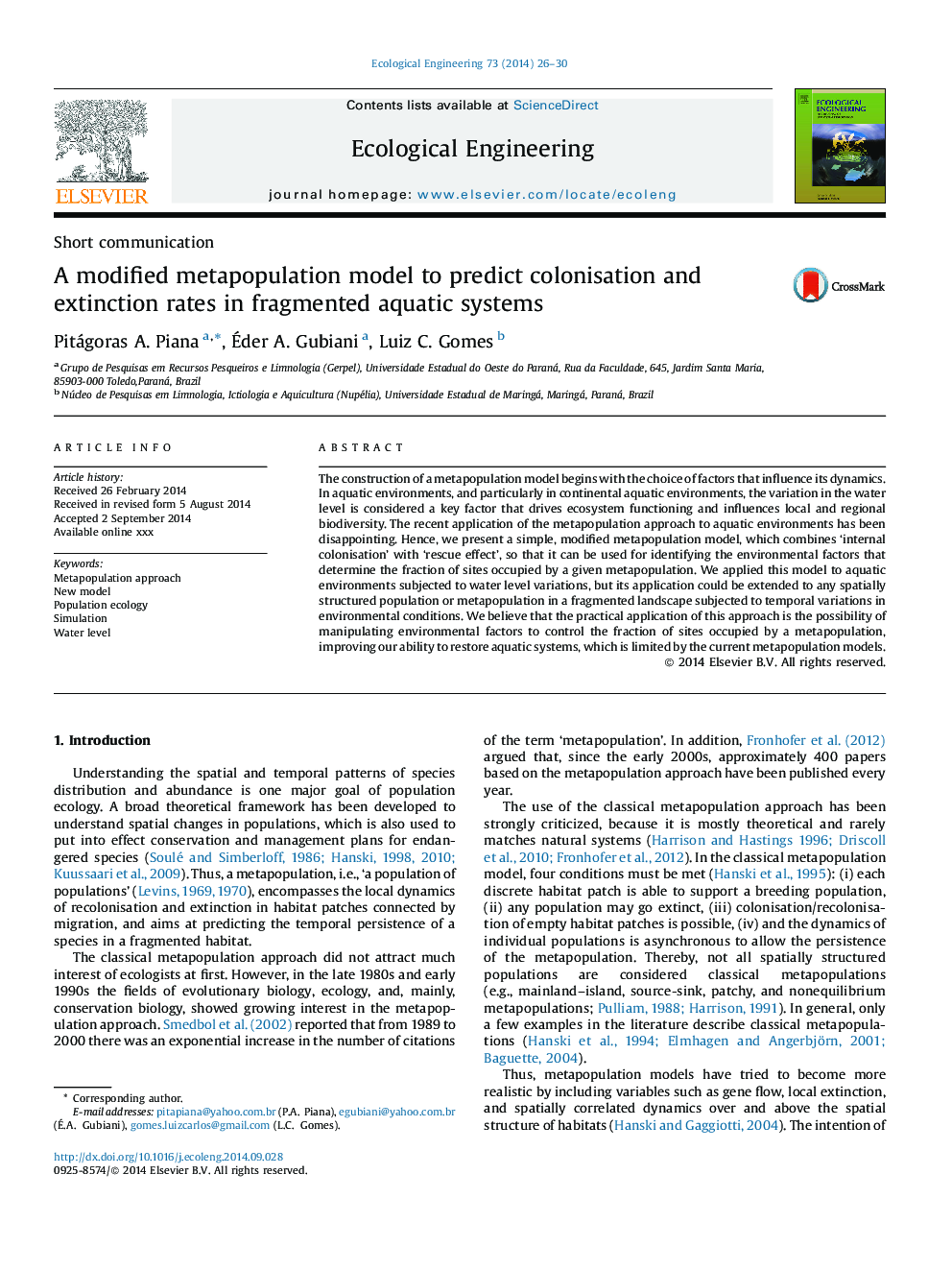| Article ID | Journal | Published Year | Pages | File Type |
|---|---|---|---|---|
| 6301844 | Ecological Engineering | 2014 | 5 Pages |
Abstract
The construction of a metapopulation model begins with the choice of factors that influence its dynamics. In aquatic environments, and particularly in continental aquatic environments, the variation in the water level is considered a key factor that drives ecosystem functioning and influences local and regional biodiversity. The recent application of the metapopulation approach to aquatic environments has been disappointing. Hence, we present a simple, modified metapopulation model, which combines 'internal colonisation' with 'rescue effect', so that it can be used for identifying the environmental factors that determine the fraction of sites occupied by a given metapopulation. We applied this model to aquatic environments subjected to water level variations, but its application could be extended to any spatially structured population or metapopulation in a fragmented landscape subjected to temporal variations in environmental conditions. We believe that the practical application of this approach is the possibility of manipulating environmental factors to control the fraction of sites occupied by a metapopulation, improving our ability to restore aquatic systems, which is limited by the current metapopulation models.
Related Topics
Life Sciences
Agricultural and Biological Sciences
Ecology, Evolution, Behavior and Systematics
Authors
Pitágoras A. Piana, Ãder A. Gubiani, Luiz C. Gomes,
